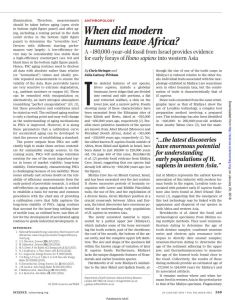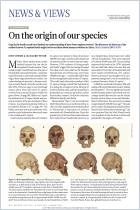Join getAbstract to access the summary!

Join getAbstract to access the summary!
Chris Stringer and Julia Galway-Witham
When Did Modern Humans Leave Africa?
A ~180,000-year-old fossil from Israel provides evidence for early forays of Homo sapiens into western Asia.
Science, 2018
What's inside?
The Misliya fossil will reshape people’s understanding of how early humans moved and evolved.
Recommendation
Based on the age and location of fossils and artifacts, researchers can build a picture of how early Homo sapiens migrated and evolved. The H. sapiens fossil recently found at Misliya Cave in Israel is the oldest specimen outside Africa. Researchers Chris Stringer and Julia Galway-Witham of the Natural History Museum in London offer a primer on this discovery. They put the Misliya fossil in context with other H. sapiens specimens and describe how it reshapes people’s knowledge of early human migration. This article will fascinate anyone curious about human evolution.
Summary
About the Authors
Chris Stringer is Merit Researcher at the Natural History Museum (NHM) in London and Fellow of the Royal Society. Julia Galway-Witham is a Research Assistant at the NHM.

















Comment on this summary